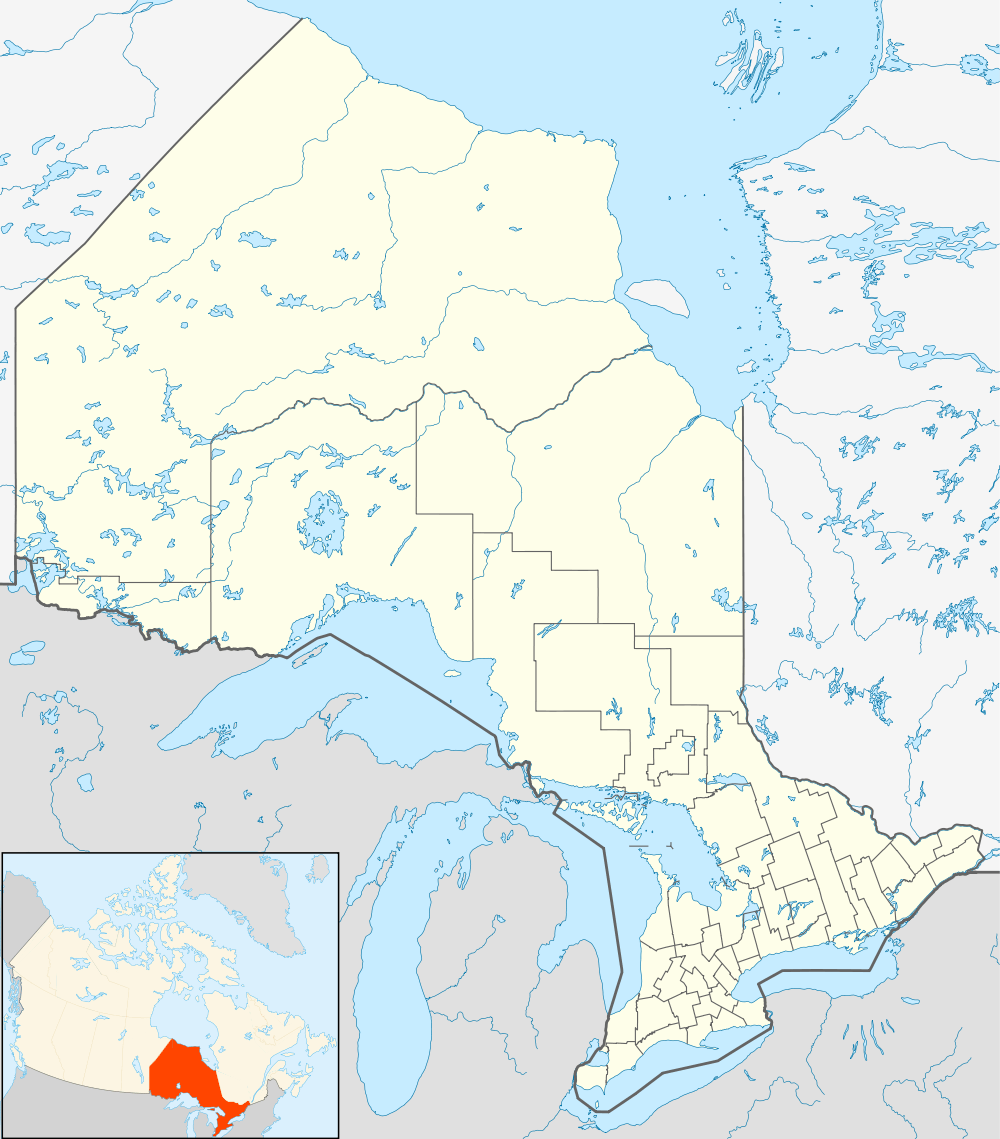Eabametoong First Nation
| Fort Hope 64 | |
|---|---|
| Indian reserve | |
| Fort Hope Indian Reserve No. 64 | |
 Fort Hope 64 | |
| Coordinates: 51°33′N 87°54′W / 51.550°N 87.900°WCoordinates: 51°33′N 87°54′W / 51.550°N 87.900°W | |
| Country |
|
| Province |
|
| District | Kenora |
| First Nation | Eabametoong |
| Area[1] | |
| • Land | 245.59 km2 (94.82 sq mi) |
| Population (2006)[1] | |
| • Total | 1,144 |
| • Density | 4.7/km2 (12/sq mi) |
Eabametoong, also known as Fort Hope, is an Ojibway First Nation band government in Kenora District, Ontario, Canada. Located on the shore of Eabamet Lake in the Albany River system, the community is located approximately 300 kilometres northeast of Thunder Bay and is accessible only by airplane to Fort Hope Airport or water, or by winter/ice roads, which connect the community to the Northern Ontario Resource Trail.
Eabametoong is policed by the Nishnawbe-Aski Police Service, an Aboriginal-based service.
The Indian reserve is completely surrounded by territory of the Unorganized Kenora District.
The following information is paraphrased from the Eabametoong First Nation web site:
Eabametoong came to be during the fur trade era when the Hudson's Bay Company set up a trading post by Eabamet lake in 1890. Canoe was used as the main source of transportation so the post had to be near water. The Fort Hope Band came into existence in 1905 when the treaty was signed by 500 people. The new community of Eabametoong started in 1982 with the official name of Eabametoong First Nation being adopted in 1985.
The name Eabametoong has a significant meaning in the Anishinaabe language; the name means, "the reversing of the waterplace." The water flow from Eabamet lake into the Albany River reverses each year, resulting from runoff water, such that water flows into Eabamet lake from the Albany River for a short period of time. The main draw for the people of Eabametoong before the fur trade was the multitudes of various fish including: sturgeon, walleye and whitefish which still inhabit the waters today.
On October 23, 2010, Chief Lewis Nate declared a state of emergency because of excessive community violence and crime, including the attempted arson of the reserve's only school. Since January, 2010, there had been three confirmed homicides and approximately 50 incidents of arson in the community. As of mid-2012 there have been no further arsons. Speculation from the local police force suggested prescription drug abuse amongst the youth was fueling the violence.[2]
On April 7, 2016, the First Nation lost its community centre to fire. The cost of replacing the centre was estimated at $1 million.[3][4]
References
- 1 2 "Fort Hope 64 census profile". 2011 Census of Population. Statistics Canada. Retrieved 27 May 2015.
- ↑ "Ontario First Nation pleads for help". CBC News. 2010-10-23. Retrieved 2010-10-24.
- ↑ Cormier, Mary-Jean; Gord Ellis (April 7, 2016). "Eabametoong First Nation loses community centre to fire". Retrieved 19 April 2016.
- ↑ Thompson, Jon (April 16, 2016). "Eabametoong community centre fire has compounded social problems". Thunder Bay News Watch. Retrieved 19 April 2016.
- "Fort Hope". Geographical Names Data Base. Natural Resources Canada. Retrieved 2010-10-23.
- "Topographic Map sheets 42M12". Atlas of Canada. Natural Resources Canada. 2010-02-04. Retrieved 2010-10-23.
External links
 |
Unorganized Kenora |  | ||
| Unorganized Kenora | |
Unorganized Kenora | ||
| ||||
| | ||||
| Eabamet Lake Unorganized Kenora |
